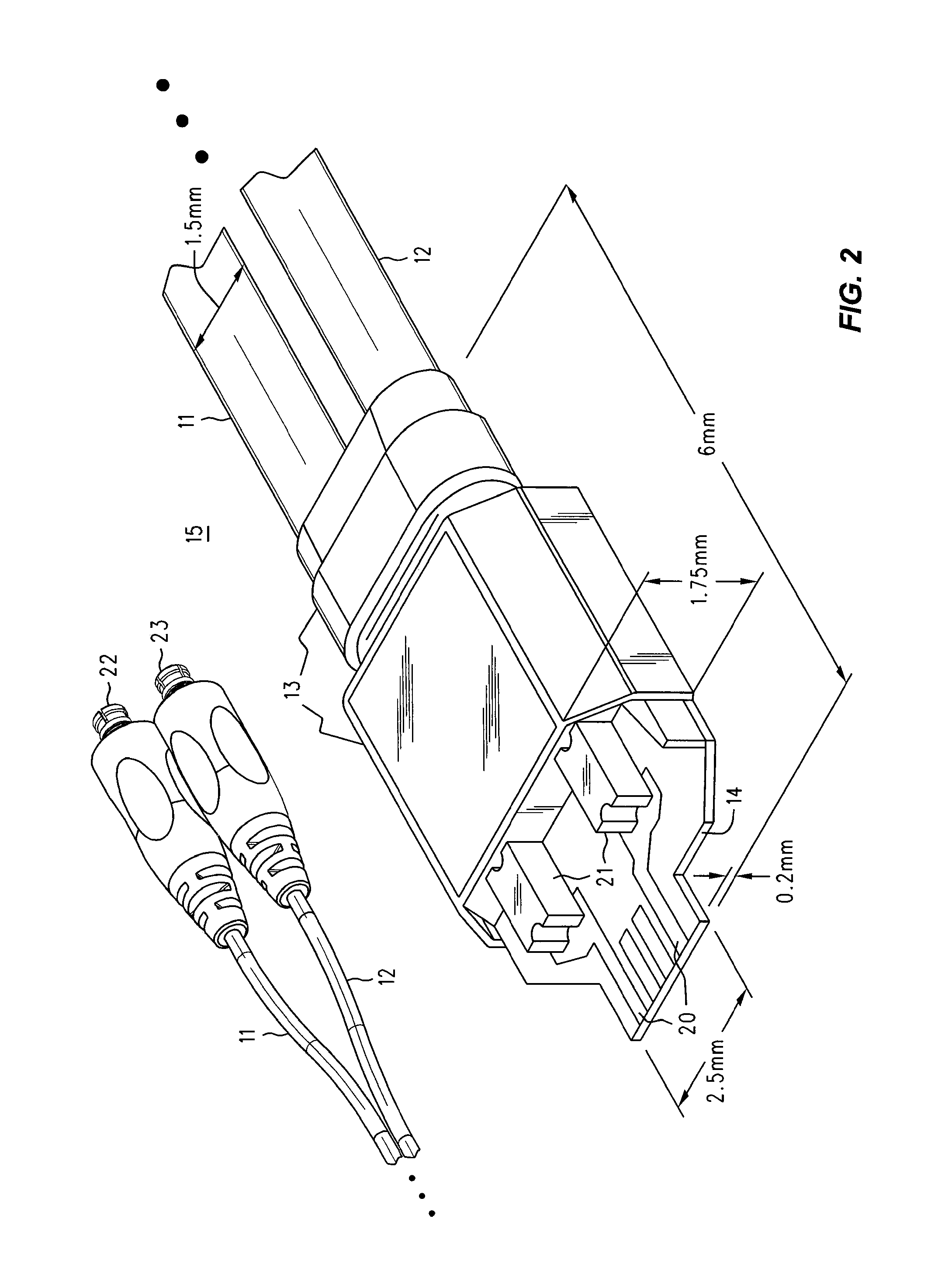ZIF connection accessory and ZIF browser for an electronic probe
a technology of electronic probes and accessories, applied in the direction of coupling contact members, coupling device connections, engagement/disengagement of coupling parts, etc., can solve the problems of difficult to meet the needs of users of certain types of electronic test equipment, such as oscilloscopes and logic analyzers, and the difficulty of adjusting the settings,
- Summary
- Abstract
- Description
- Claims
- Application Information
AI Technical Summary
Benefits of technology
Problems solved by technology
Method used
Image
Examples
Embodiment Construction
[0013]Refer now to FIG. 1, wherein is shown a front perspective view 1 of an electronic instrument 2, such as a wideband digital oscilloscope, having one or more front panel connectors 4 that each receive a probe pod 3 bearing (in the example) a push-lock BNC connector, say, in support of operation with active probes. In a manner known in the prior art, the probe pod 3 is installed simply by lining it up and then pushing it toward the 'scope. When the probe pod 3 is in place, not only is a BNC connection established to connector 4, a row of spring loaded pins 6 (not visible) on the front panel of the pod assembly engages a row 5 of contacts beneath the connector 4. To remove the push-lock connector the operator pushes on lever or tab 7 with a thumb or a finger, while pulling the assembly away from the 'scope. A main cable 8 carries both power to, and signal information from, a handheld probe housing 9 containing the high frequency replication amplifiers that make the probe an ‘activ...
PUM
 Login to View More
Login to View More Abstract
Description
Claims
Application Information
 Login to View More
Login to View More - R&D
- Intellectual Property
- Life Sciences
- Materials
- Tech Scout
- Unparalleled Data Quality
- Higher Quality Content
- 60% Fewer Hallucinations
Browse by: Latest US Patents, China's latest patents, Technical Efficacy Thesaurus, Application Domain, Technology Topic, Popular Technical Reports.
© 2025 PatSnap. All rights reserved.Legal|Privacy policy|Modern Slavery Act Transparency Statement|Sitemap|About US| Contact US: help@patsnap.com



